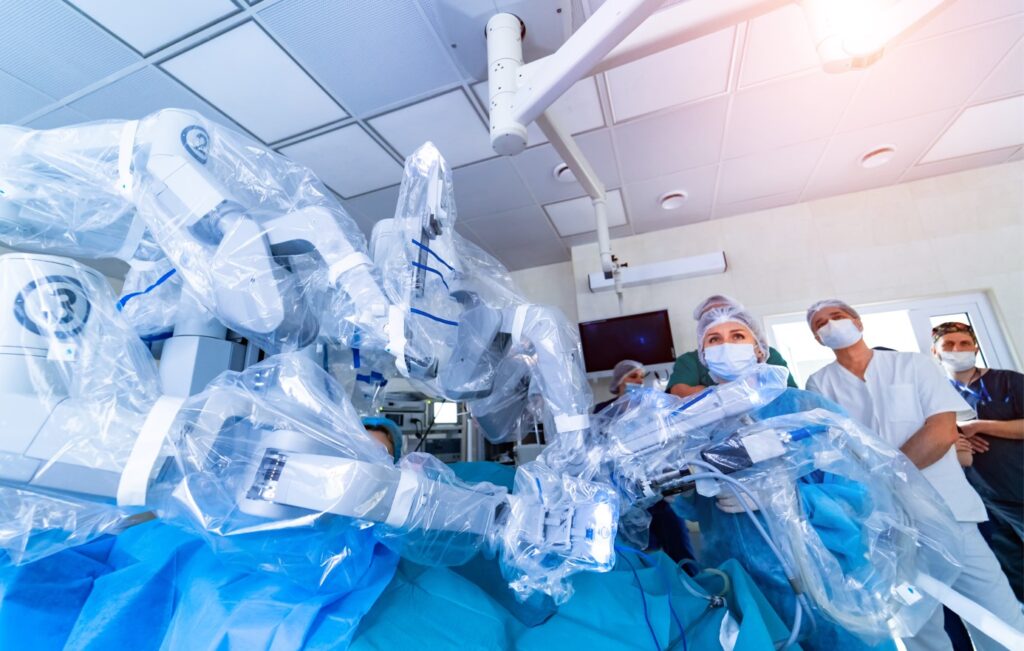Whenever I start a sentence with nowadays, I am surely revealing my true age. Anyway, nowadays we have robots to do things that we could only have imagined when we watched “The Jetsons” growing up. There I go again. Dating myself with a reference to a TV show from the 1960s.
I’ll bet many of us don’t even have a clue how robots are affecting our daily lives. Beyond the vacuum cleaner, many of us don’t realize that robots are sorting the rice we eat, making deliveries, filling our prescriptions and I even heard that in Japan they have trained a robot to perform funerals.
Healthcare is always on the forefront of technological innovation and beginning in the 1990s robots began being used in surgery. In a robot assisted surgery, the surgeon actually sits at a station away from the patient and utilizes the robot arms which are inside the patient. The robot arms can be affixed with instruments such as forceps, scissors, scalpels and electrocautery devices.
The daVinci robot has a monopoly on the field having installed well over 5,500 worldwide. Take prostate surgery as an example. In 2003, less than 1% of all prostatectomies in the U.S. were performed robotically. By 2014, that number grew to 90%.
Intuitive Surgical claims that surgeons who operate with their robot have better outcomes because the robot can perform technical maneuvers that the human hands and wrists cannot.
According to the manufacturer, Intuitive Surgical, the daVinci robot “enables your surgeon to provide the most effective and least invasive treatment option available for a wide range of complex conditions.” In fact, this statement was untrue when it was made in 2010 and it remains untrue today.
In fact, there are no long-term studies that outcomes from robot-assisted surgery are superior to those of conventional procedures. A recent study published in Annals of Internal Medicine concluded “there is currently no clear advantage with existing robotic platforms.”
Yet, Intuitive Surgical continues to market its robot to hospitals. And Intuitive continues to expand the list of surgeries they believe can be performed robotically. So, why you may ask would your surgeon recommend a more expensive procedure be performed robotically if it has no real advantage over conventional or laparoscopic surgery?
AHHH, I thought you’d never ask! Well, follow the money folks. A robot sells for around $2 million. A hospital who buys a robot has to pay for that robot. The way a hospital pays for the robot is to use the robot. If you have a hammer, you are looking for nails.
As in fashion, things in medicine can come into vogue. For unsuspecting patients, a surgeon who is at the forefront of using a robot to perform your surgery must be something special, right? Or, is this more of a marketing gimmick to get patients?
Many surgeons have financial arrangements with Intuitive Surgical where they receive speaking fees, consulting fees, honoraria, titles, etc. In order to maintain their status with Intuitive, they have to maintain their status as a prolific robotic surgeon.
In order to compete for surgery patients, hospitals and surgeons simply have to have robotic capability. But, would the average patient be able to know whether they are the victim of a good marketing campaign, a lucrative financial arrangement or just good medicine. Sadly, it is really hard to know.
If you or a loved one are set to undergo surgery in the near future, my advice is to ask some sharp questions of your surgeon. Why are they opting for the robot over traditional or laparoscopic surgery? How many of these procedures have they done with robot? What has the complication rate been?
Patient safety means that what is best for the patient must not be influenced by profit. As a patient, I strongly advise that you do your own research. Knowledge is power!










